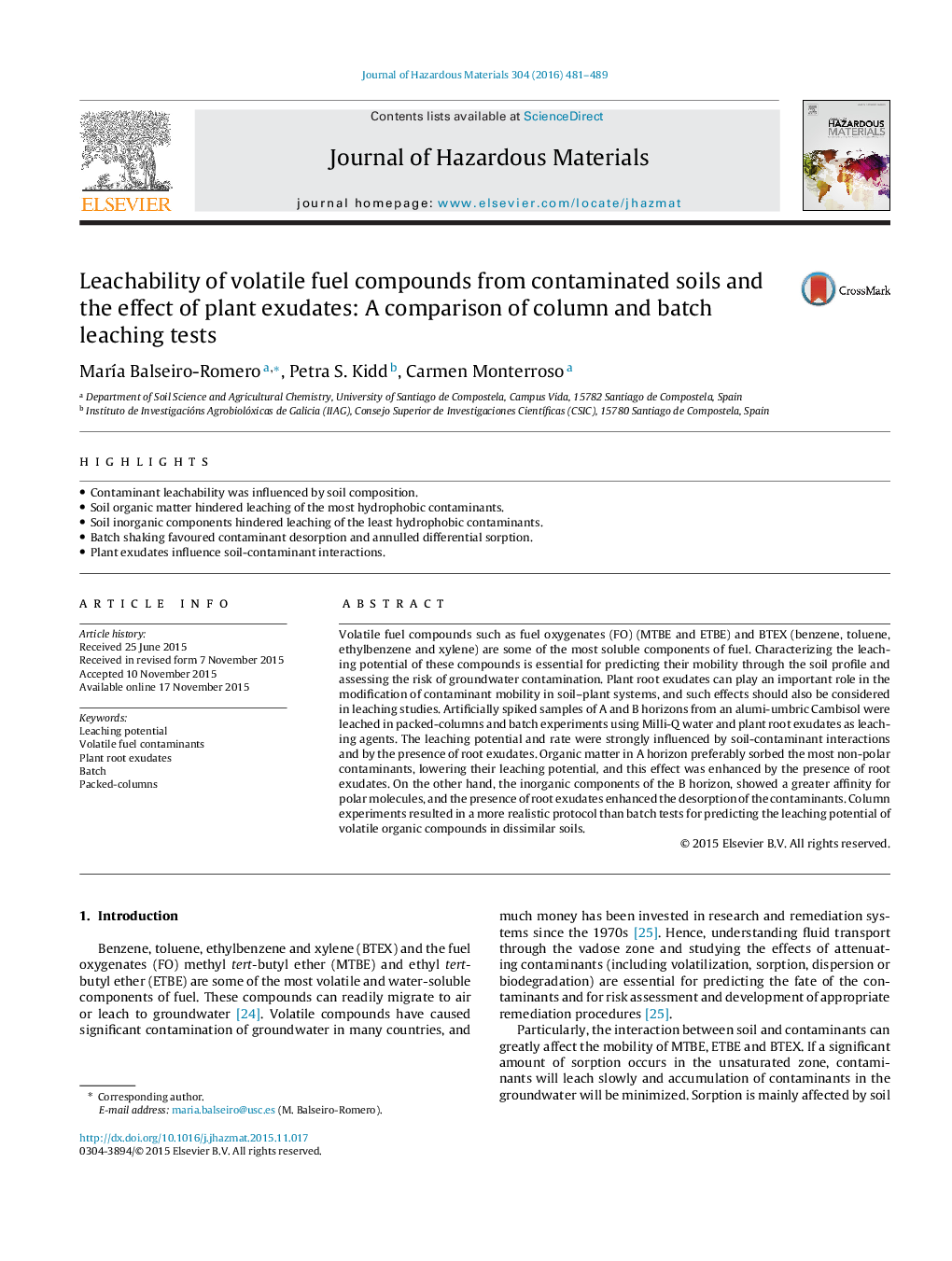| Article ID | Journal | Published Year | Pages | File Type |
|---|---|---|---|---|
| 575506 | Journal of Hazardous Materials | 2016 | 9 Pages |
Abstract
Volatile fuel compounds such as fuel oxygenates (FO) (MTBE and ETBE) and BTEX (benzene, toluene, ethylbenzene and xylene) are some of the most soluble components of fuel. Characterizing the leaching potential of these compounds is essential for predicting their mobility through the soil profile and assessing the risk of groundwater contamination. Plant root exudates can play an important role in the modification of contaminant mobility in soil-plant systems, and such effects should also be considered in leaching studies. Artificially spiked samples of A and B horizons from an alumi-umbric Cambisol were leached in packed-columns and batch experiments using Milli-Q water and plant root exudates as leaching agents. The leaching potential and rate were strongly influenced by soil-contaminant interactions and by the presence of root exudates. Organic matter in A horizon preferably sorbed the most non-polar contaminants, lowering their leaching potential, and this effect was enhanced by the presence of root exudates. On the other hand, the inorganic components of the B horizon, showed a greater affinity for polar molecules, and the presence of root exudates enhanced the desorption of the contaminants. Column experiments resulted in a more realistic protocol than batch tests for predicting the leaching potential of volatile organic compounds in dissimilar soils.
Keywords
Related Topics
Physical Sciences and Engineering
Chemical Engineering
Chemical Health and Safety
Authors
MarÃa Balseiro-Romero, Petra S. Kidd, Carmen Monterroso,
